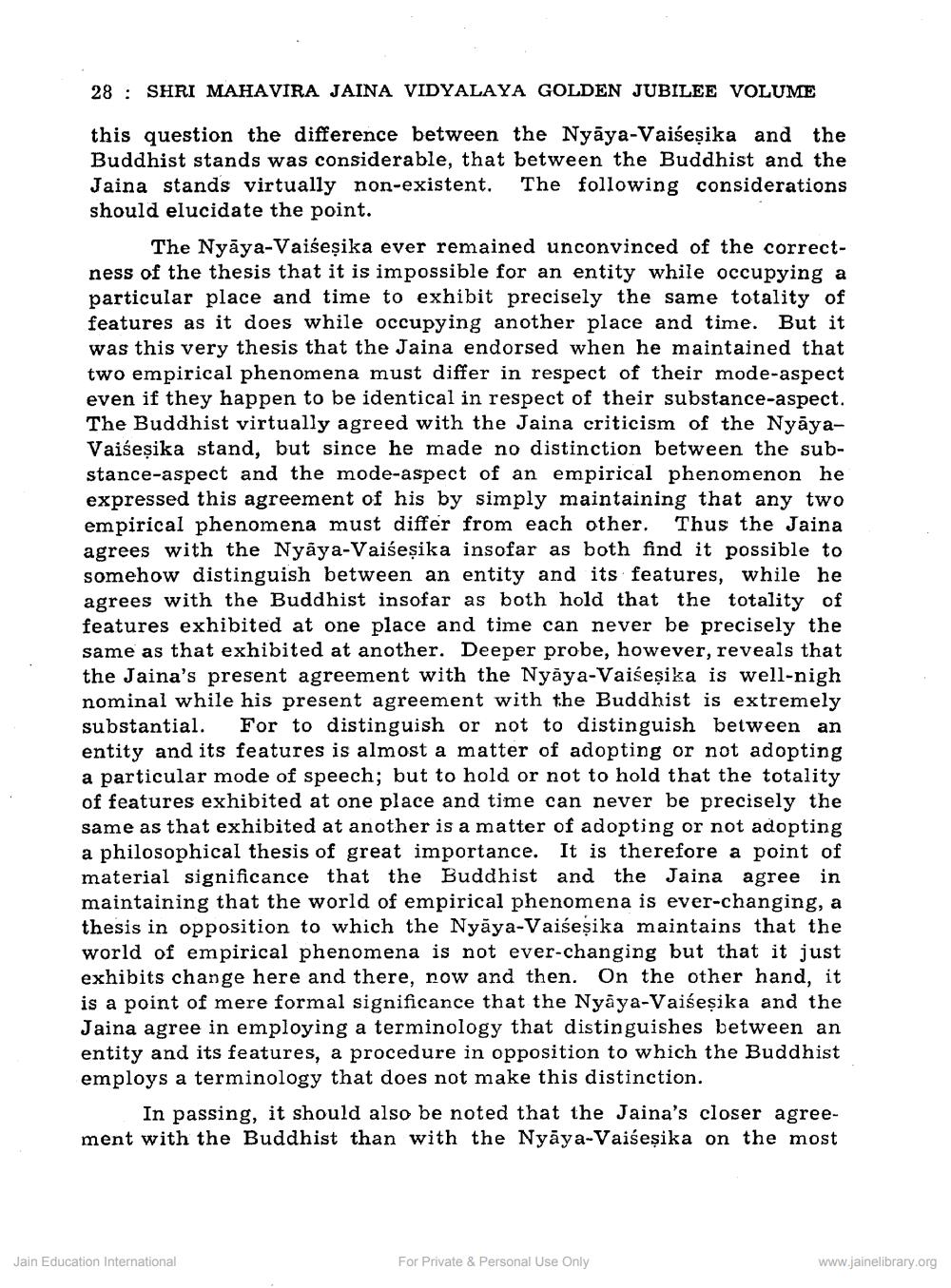Book Title: Logical and Historical Significance of Jaina Philosophical Tradition Author(s): K K Dixit Publisher: Z_Mahavir_Jain_Vidyalay_Suvarna_Mahotsav_Granth_Part_1_012002.pdf and Mahavir_Jain_Vidyalay_Suvarna_ View full book textPage 8
________________ 28 : SHRI MAHAVIRA JAINA VIDYALAYA GOLDEN JUBILEE VOLUME this question the difference between the Nyāya-Vaiseșika and the Buddhist stands was considerable, that between the Buddhist and the Jaina stands virtually non-existent. The following considerations should elucidate the point. The Nyāya-Vaiseșika ever remained unconvinced of the correctness of the thesis that it is impossible for an entity while occupying a particular place and time to exhibit precisely the same totality of features as it does while occupying another place and time. But it was this very thesis that the Jaina endorsed when he maintained that two empirical phenomena must differ in respect of their mode-aspect even if they happen to be identical in respect of their substance-aspect. The Buddhist virtually agreed with the Jaina criticism of the NyāyaVaiseșika stand, but since he made no distinction between the substance-aspect and the mode-aspect of an empirical phenomenon he expressed this agreement of his by simply maintaining that any two empirical phenomena must differ from each other. Thus the Jaina agrees with the Nyâya-Vaiseșika insofar as both find it possible to somehow distinguish between an entity and its features, while he agrees with the Buddhist insofar as both hold that the totality of features exhibited at one place and time can never be precisely the same as that exhibited at another. Deeper probe, however, reveals that the Jaina's present agreement with the Nyāya-Vaišeșika is well-nigh nominal while his present agreement with the Buddhist is extremely substantial. For to distinguish or not to distinguish between an entity and its features is almost a matter of adopting or not adopting a particular mode of speech; but to hold or not to hold that the totality of features exhibited at one place and time can never be precisely the same as that exhibited at another is a matter of adopting or not adopting a philosophical thesis of great importance. It is therefore a point of material significance that the Buddhist and the Jaina agree in maintaining that the world of empirical phenomena is ever-changing, a thesis in opposition to which the Nyāya-Vaiseșika maintains that the world of empirical phenomena is not ever-changing but that it just exhibits change here and there, now and then. On the other hand, it is a point of mere formal significance that the Nyāya-Vaiseșika and the Jaina agree in employing a terminology that distinguishes between an entity and its features, a procedure in opposition to which the Buddhist employs a terminology that does not make this distinction. In passing, it should also be noted that the Jaina's closer agreement with the Buddhist than with the Nyāya-Vaiseșika on the most Jain Education International For Private & Personal Use Only www.jainelibrary.orgPage Navigation
1 ... 6 7 8 9
